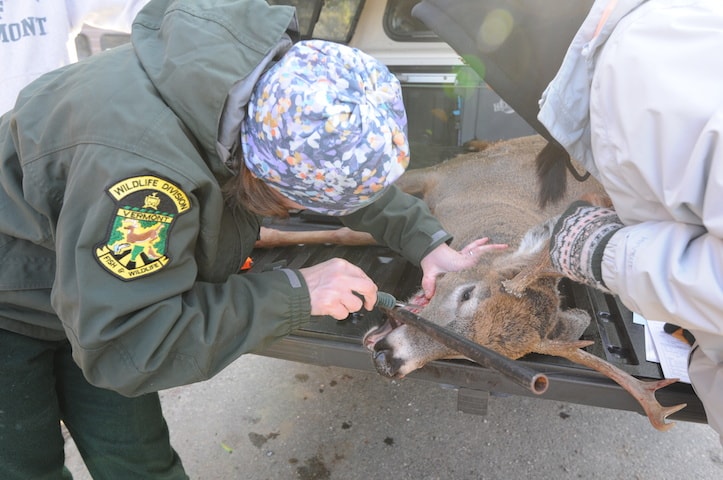
MONTPELIER, Vt. – Hunters are gearing up for the start of Vermont’s traditionally popular 16-day regular deer season that begins Saturday, Nov. 14 and ends Sunday, Nov. 29.
A hunter may take one legal buck during this season. The definition of a legal buck depends on the Wildlife Management Unit. A map of the WMUs is on pages 22 and 23 of the 2020 Vermont Hunting & Trapping Guide available from license agents statewide.
In WMUs C, D1, D2, E1, E2, G, I, L, M, P, and Q a legal buck is any deer with at least one antler three inches or more in length. In WMUs A, B, F1, F2, H, J1, J2, K, N, and O a legal buck is any deer with at least one antler with two or more antler points one inch in length or longer.
“The greatest numbers of deer continue to be in the southwestern and northwestern regions of the state,” said Vermont Fish & Wildlife’s deer biologist Nick Fortin. “The Green Mountains and Northeast Kingdom offer more of a big woods experience with fewer, but often larger, deer.”
Vermont hunting licenses include a buck tag for this season and a late season bear tag for Nov. 14-22. Licenses are available on Fish & Wildlife’s website and from license agents statewide.
Fish and Wildlife urges hunters to wear a fluorescent orange hat and vest to help maintain Vermont’s very good hunting season safety record.
A 2020 Vermont Deer Hunting Guide can be downloaded from the department’s website at www.vtfishandwildlife.com. The guide includes a map of the Wildlife Management Units, season dates, regulations, and other helpful information.
Hunters who get a deer Nov. 14 or 15 can help Vermont’s deer management program by reporting their deer at one of the biological check stations that will be staffed from 9 a.m. to 7 p.m. Biologists are collecting middle incisor teeth from deer to help estimate population size, growth rate, health, and mortality rates, and to evaluate regional differences in ages of bucks. Each tooth will be cross-sectioned to accurately determine the deer’s age, and the results will be posted on the Fish & Wildlife website next spring.
Hunters who do not go to a biological reporting station are also asked to provide a tooth from their deer. Obtain a tooth envelope from your regular reporting agent. Remove one of the middle incisor teeth, being careful to include the root. Place the tooth in the envelope and give it to the reporting agent.
Hunters are reminded to follow all guidelines and restrictions currently in place for mitigating and preventing the spread of Covid-19 at this time. This includes quarantine and travel restrictions for out-of-state hunters who wish to hunt in Vermont as well as wearing face masks and practicing proper social distancing for successful hunters checking in deer at big game reporting stations.